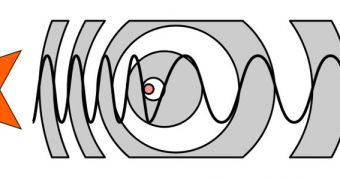An international team of investigators says that using Doppler radars for keeping an eye on monsoons could significantly improve the accuracy of predictions as to when the events will hit.
The approach could also yield more viable data as to how intense and strong the weather event will be. This is very important considering that millions in Asia depend on it for their survival.
In India, for example, half of the year is marked by drought, whereas the other half is filled with monsoon rains, which cause floods, and bring back life to the regions.
The area's crops would be nothing without these rains, and any shift in their patterns would have significant repercussions on food security in the region, which is already battered by poverty.
The research collaboration that led to this conclusion was made up of researchers from the Purdue University, the National Center for Atmospheric Research and the Indian Institute of Technology Delhi.
“When you run a forecast model, how you represent the initial state of the atmosphere is critical,” explains Purdue associate professor of agronomy and earth and atmospheric sciences, Dev Niyogi.
“Even if Doppler radar information may seem highly localized, we find that it enhances the regional atmospheric conditions, which, in turn, can significantly improve the dynamic prediction of how the monsoon depression will move as the storm makes landfall,” the expert explains.
“It certainly looks like a wise investment made in Doppler radars can help in monsoon forecasting, particularly the heavy rain from monsoon processes,” he goes on to say.
Niyogi believes that the Doppler weather radars could also improve modeling of monsoon depression tracks, which currently has a 200-kilometer margin of error for landfall.
While this level of accuracy may seem sufficient at first, it could in fact mean the difference between life or death for millions.
If experts don't know where storms carrying up to 20-25 inches of rain will fall, then there is no way for them to prevent the consequences of inland floods, which can produce numerous fatalities.
“Once a monsoon depression passes through, it can cause catastrophic floods in the coastal areas of India. Doppler radar is a very useful tool to help assess these things,” adds U.C. Mohanty.
He holds an appointment as a professor in the Center for Atmospheric Sciences at the Indian Institute of Technology. The expert explains that monsoons bring about 80 percent of all rain in India.
Details of how Doppler radars would improve monsoon pattern predictions were recently published,. In the latest issue of the Quarterly Journal of the Royal Meteorological Society.

 14 DAY TRIAL //
14 DAY TRIAL //